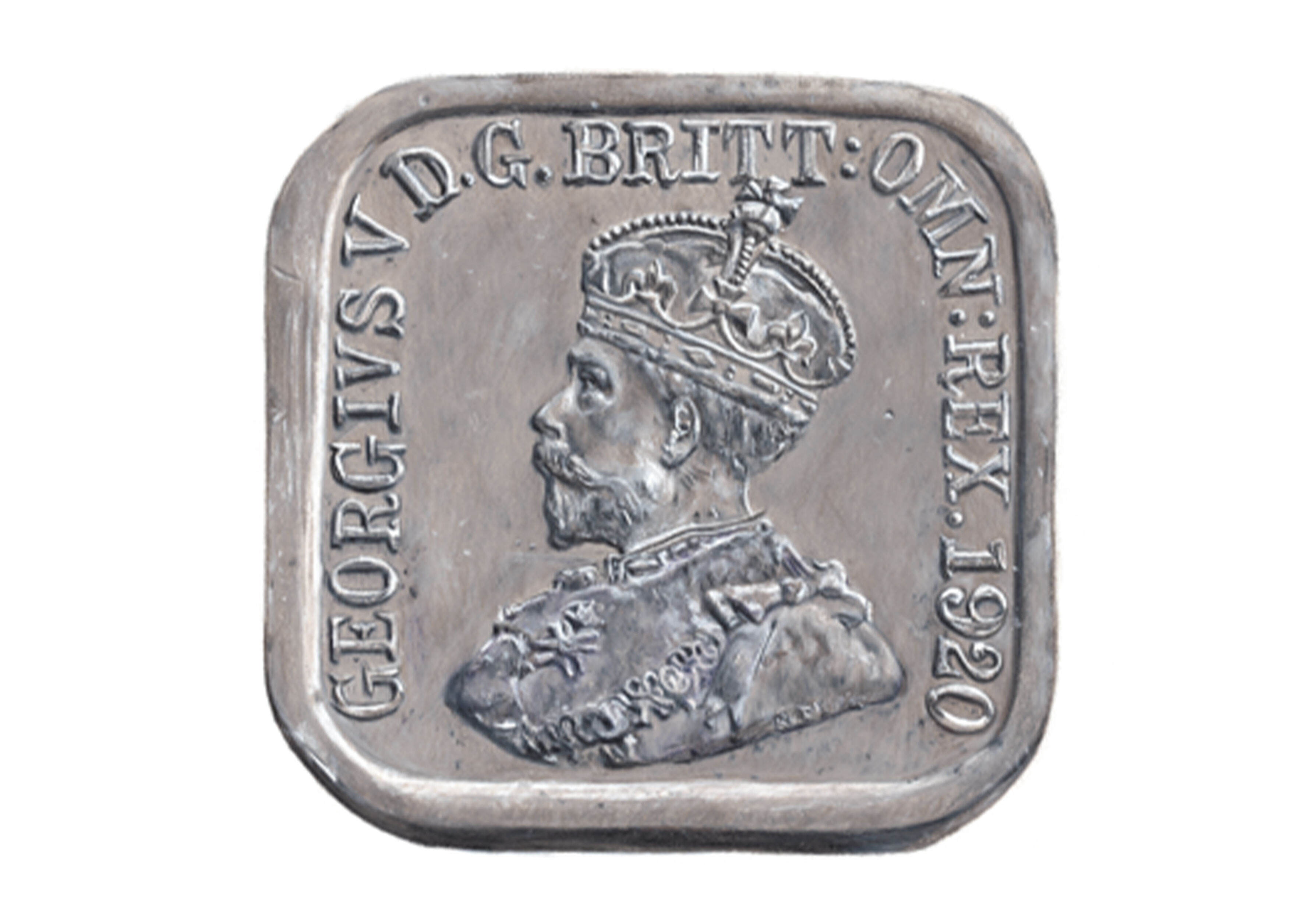-
Ultra Limited Edition – Only 30 Giclée prints, signed & numbered
-
Archival Quality – Pigment inks on 310gsm Smooth Cotton Rag paper
-
Faithful to the Original – Colours carefully matched to the original colour pencil drawing
-
Certificate of Authenticity – Each edition logged, photographed, and documented for provenance
-
Secure Shipping – Express Post with tracking in Australia, international options available
Limited Edition '1920 Type 10 Kookaburra Square Penny'
Where Change Meets Tradition
Every coin tells a story. Some are markers of history, reflecting the people and powers that shaped their time. Others, like the Type 10 Kookaburra Penny, are stories of possibility and bold ideas that never found their place in daily life, yet left a mark all the same.
While the 13-piece Kookaburra series is often remembered as a story of courage and identity, the Type 10 invites a quieter kind of reflection.
Born out of post-war experimentation, the series alone was enough to stir debate. Practicality won over novelty, and the project was abandoned. For collectors today, the very fact that these coins were never issued adds to their magnetism and offers a glimpse into what might have been.
When reimagining a rare coin as an artwork, especially one carrying the portrait of a significant figure, something happens. Imagine spending 35 hours with someone you’ve never met before, a pencil in hand, studying every curve of their face. Inevitably, a curiosity stirs. Who are they, really?
That same curiosity rises when drawing a King. Admittedly, King George V was someone I knew little about at first. And while monarchy is a world many of us will never fully know or understand, there was an entry point that invited connection, the discovery that King George’s granddaughter, the late Queen Elizabeth II affectionately called him ‘Grandpa England.’
Through her eyes, he became more than a monarch stamped on coinage. He became a son, a husband, a father, a grandfather. A man whose likeness just happened to appear on the obverse of millions of coins around the world.
The Story Behind the Artwork
At first glance, the King’s portrait on the Type 10 seems pared back when compared to the circulating bronze pennies or the sovereigns and half sovereigns of his reign. Yet under magnification, the detail surprises! The curvature of the ear, the layered embroidery of the ceremonial robe, the fine jewels across the crown. Lighting revealed nuances and details that could easily be missed, only uncovered through the slow, intentional act of drawing.
Australia ultimately decided not to move forward with this experimental series of square pennies. Yet, in its abandonment, there is a powerful lesson that nothing is lost in trying.
Courage is required to initiate change, to build something different, and to let go of what no longer serves. There is also wisdom in holding on to the parts of the old that honour the journey, especially that of a young nation.
Unlike the other twelve patterns in the series, this was the only obverse design where King George V is depicted wearing his crown. A quiet nod to monarchy? A political statement? Perhaps.
The Type 10 Kookaburra Penny is a design that dared to be different, both in shape and in spirit. To honour this difference and invite reflection, just 30 Giclée prints have been created, each faithfully reproduced from the original artwork, hand-signed, and individually numbered for provenance.
Product details
About the Artist
Coinart grew from a love of both fine art and rare coins. With formal art training and years spent in the numismatic world, I’ve found a way to preserve the beauty of historic coins in a form collectors can enjoy every day.
Each artwork is about more than metal. Coinart is about memory, legacy, and keeping the passion for collecting alive, even when coins remain safely stored away.
Coming Soon…
A membership is in the works for people who love coins and want to learn how to create their own Coinart. If this sparks your interest, click below and be first to know when the doors open.
Shipping
Orders of prints in stock will be dispatched within 2 days of receiving orders, as sending artwork requires time and care.
Some artworks are print to order, in this instance please allow 2 weeks for printing time and postage. If your order is time sensitive, please contact Sarah directly at hello@sarahbraybrook.com
Art works will be sent using the Standard Australia Post service. Art will be packaged either flat between two sheets of cardboard, or in a sturdy postage tube.
Express Post services are available upon request at the cost of that service to you.
All orders are trackable within Australia and Internationally. The current world climate has placed a great strain on postal services, making delivery times vary greatly.
Returns Policy
Sarah Braybrook is committed to providing exceptional art production for every order. Whether a single giclee print, a poster or a collection of prints, every order receives the individualised care it deserves.
Sarah Braybrook has a no returns policy for change of mind.
Artwork that is delivered will be free of defects.
In the unfortunate instance that damage to your order occurs during shipping, please email photos of the damaged items to hello@sarahbraybrook.com within 48 hours of receiving your order.
Upon confirmation of damaged goods, a return address will be emailed to you. Please send the damaged items to this address, and a replacement item will be sent to you upon receipt of the damaged order.
In the case you choose to receive a refund for a damaged order, payment will be made directly into your nominated account within 48 hours of receiving your returned item, not including return shipping costs.
Every endeavour is made to ensure accuracy with the supply of your order. In the regrettable case an error does occur with an item in your order ie. incorrect print size or limited edition number, please contact hello@sarahbraybrook.com immediately for a swift resolution.

